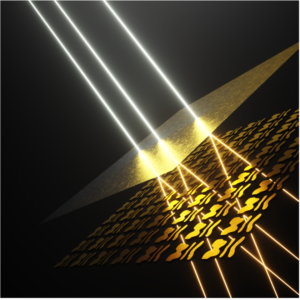
Researchers at the University of Pennsylvania, AMOLF, and the City University of New York (CUNY) have created a surface with a nanostructure capable of solving mathematical equations.
Powered by light and free of electronics, this discovery introduces exciting new prospects for the future of computing.
Nader Engheta, H. Nedwill Ramsey Professor of Electrical and Systems Engineering at the University of Pennsylvania School of Engineering and Applied Science, is a visionary figure in optics and in electromagnetic platforms. For the last two decades, he has created theory and designed experiments to make electromagnetic and optical devices that operate at the fastest rate in the universe.
Engheta is the founder of the influential field of “optical metatronics.” He creates materials that interact with photons to manipulate data at the speed of light. Engheta’s contribution to this study marks an important advance in his quest to use light-matter interactions to surpass the speed and energy limitations of digital electronics, bringing analog computing out of the past and into the future.
“I began the work on optical metatronics in 2005,” says Engheta, “wondering if it were possible to recreate the elements of a standard electronic circuit at nanoscale. At this tiny size, it would be possible to manipulate the circuit with light, rather than electricity. After achieving this, we became more ambitious, envisioning collections of these nanocircuits as processors. In 2014, we were designing materials that used these optical nanostructures to perform mathematical operations, and in 2019, we anted up to entire mathematical equations using microwaves. Now, my collaborators and I have created a surface that can solve equations using light waves, a significant step closer to our larger goals for computing materials.”
The study, recently published in Nature Nanotechnology, demonstrates the possibility of solving complex mathematical problems and a generic matrix inversion at speeds far beyond those of typical digital computing methods.
The solution converges in about 349 femtoseconds (less than one trillionth of a second), orders of magnitude faster than the clock speed of a conventional processor.
Read the full story in Penn Engineering Today.
Nader Engheta is the H. Nedwill Ramsey Professor in the Departments of Electrical and Systems Engineering and in Bioengineering in the School of Engineering and Applied Science and Professor in Physics and Astronomy in the School of Arts & Sciences at the University of Pennsylvania.

